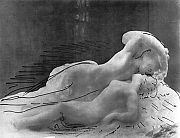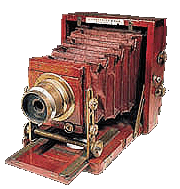

Exploring methods of two-dimensional documentation
(1)
 Already in Rodin´s time, the medium of photography won great importance in documenting the shape of sculptures and
started to dominate
over traditional drawings and etchings. Rodin himself engaged photographers like
Druet and Bulloz, and later Steichen and Haweis & Coles to document his work
and even represent it in public exhibitions. For a database of such historical
photos you can visit the Rodin-Web IMAGEBASE.
Already in Rodin´s time, the medium of photography won great importance in documenting the shape of sculptures and
started to dominate
over traditional drawings and etchings. Rodin himself engaged photographers like
Druet and Bulloz, and later Steichen and Haweis & Coles to document his work
and even represent it in public exhibitions. For a database of such historical
photos you can visit the Rodin-Web IMAGEBASE.

Since then, the medium has seen a great artistic and
technical development. But basically, the carrier of image information has
remained a light-sensitive plate or film, in several formats:
24 x 36 mm, 4½ x
6
cm, 6 x 6 or 6 x 7 cm, 4" x 5" or 8" x 10", etc. The larger the film format, the higher the resolution and the quality of the image.
For an overview of different camera systems and their specifications, see the Camera
Review Website.
When photos have to be
recorded and processed in a digitized form, it is either possible to scan
conventional film negatives or slides with a film scanner, or to record the images in
digital format right-away. For a discussion of technical
advantages/disadvantages, see the Binbooks
Forum.

